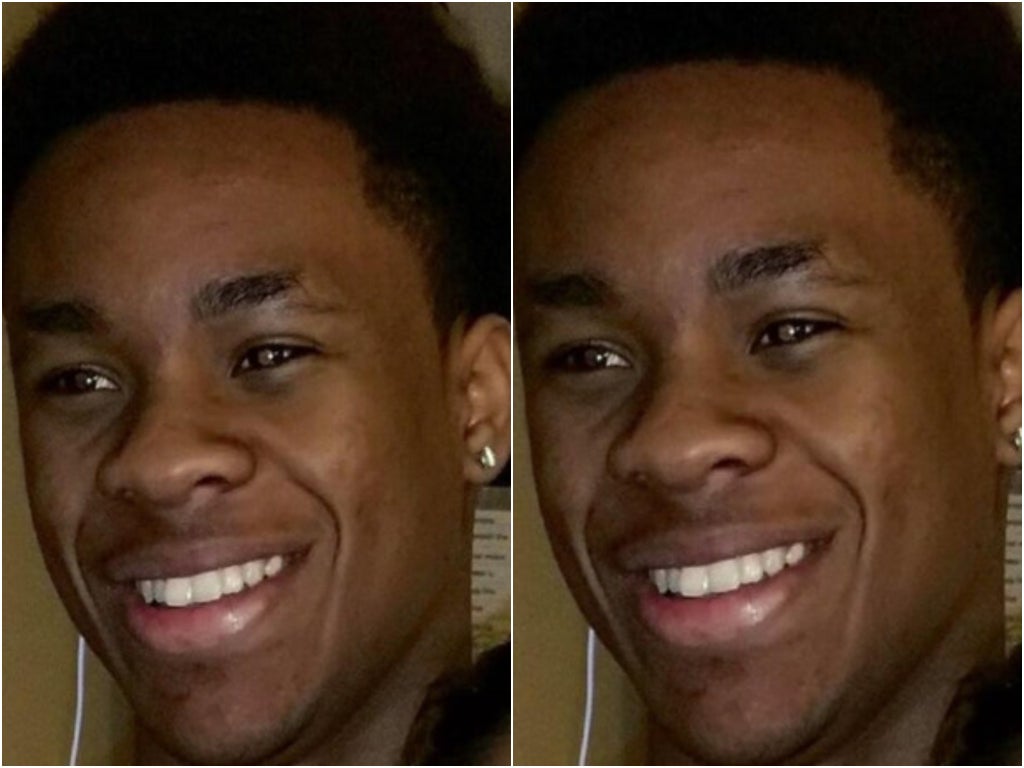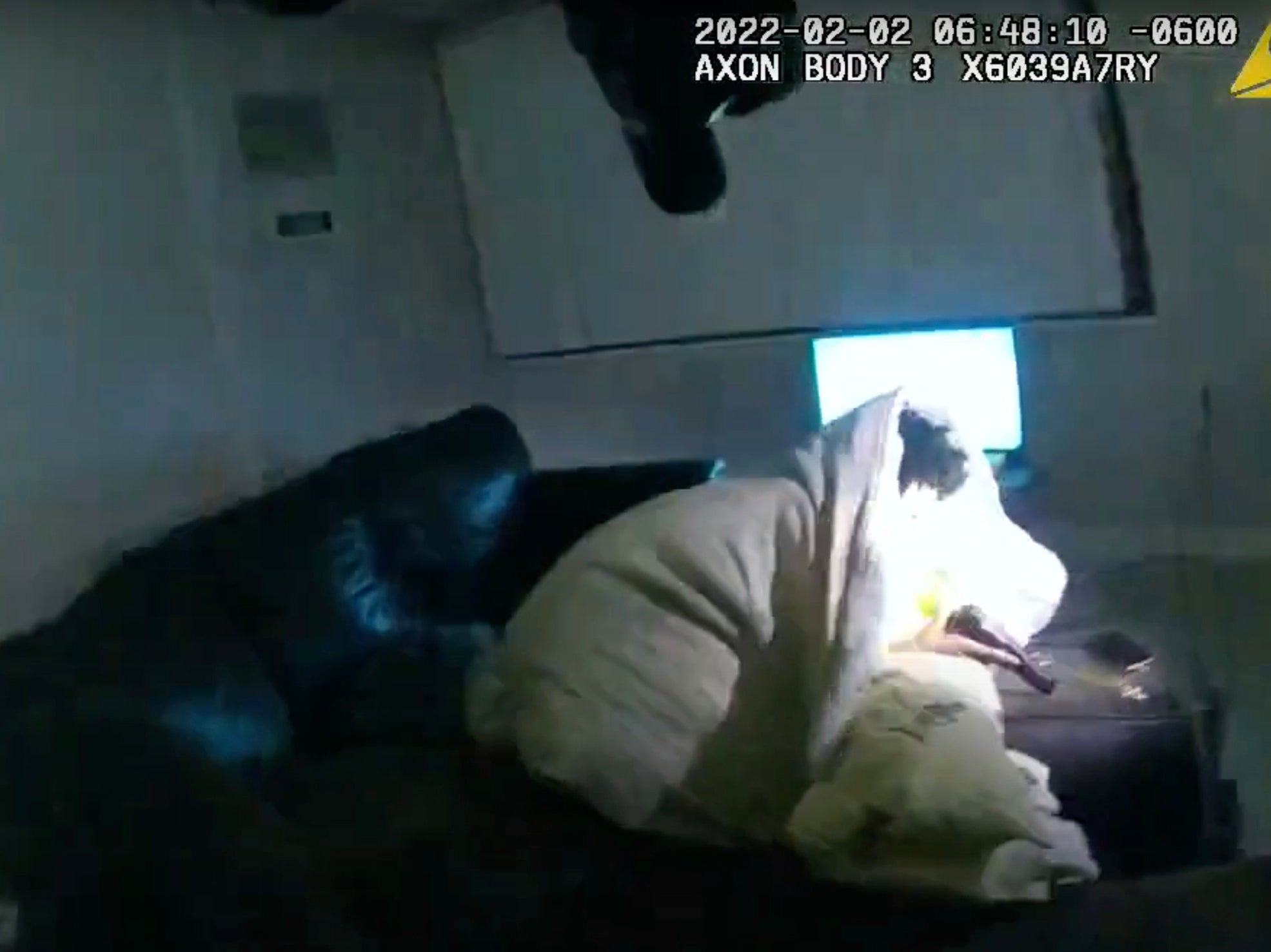
Amir Locke, 22, was killed by Minneapolis Police as they executed a no-knock warrant during a homicide investigation.
Police entered the apartment where Mr Locke, who was holding a gun, was killed at 6.48am on Wednesday.
Locke had concealed carry permit for gun
His parents, Andre Locke and Karen Wells, said on Friday that their son was “executed” by the Minneapolis SWAT team, when they woke him from a deep sleep. They added that he reached in confusion for his gun, for which he had a concealed carry permit, to protect himself.
They described the 22-year-old as respectful, including towards police officers, and said some of their relatives work in law enforcement. Ms Wells said the couple coached their son on how to act and do “what they needed to do whenever they encountered police officers” because of the danger to “unarmed Black males”.
“My son was executed on 2-2 of 22,” Ms Wells said. “And now his dreams have been destroyed.”
A gun-rights group highlighted the timing of the raid, saying it appeared from the video that Mr Locke had been awakened by a confusing array of commands from multiple officers pointing lights and guns at him.
“Mr Locke did what many of us might do in the same confusing circumstances, he reached for a legal means of self-defence while he sought to understand what was happening,” said Rob Doar, a spokesman for the Minnesota Gun Owners Caucus.
Locke family represented George Floyd civil rights attorney
The family has hired civil rights lawyer Ben Crump, who also represented the family of George Floyd.
Mr Crump said in a statement that as in “the case of Breonna Taylor, the tragic killing of Amir Locke shows a pattern of no-knock warrants having deadly consequences for Black Americans. This is yet another example of why we need to put an end to these kinds of search warrants so that one day, Black Americans will be able to sleep safely in their beds at night”.
During a press conference, Mr Crump said the family was “just flabbergasted at the fact that Amir was killed in this way” and that they were sickened at how the raid was carried out. They added that he was law-abiding, had no criminal record, and that he had a permit to carry a gun.
“They didn’t even give him a chance,” Mr Crump said, adding that it was shocking that Minneapolis police had not learned from the death of Ms Taylor, who was killed in a botched raid at her home in Louisville, Kentucky, in 2020, leading to calls for an end to no-knock warrants across the country.
Body camera footage of raid released
The video shows Mr Locke on a couch covered by a blanket and holding a gun in the moments before he’s shot by Minneapolis officers.
In the footage, several officers enter the apartment at 6.48am on Wednesday using a key, shooting Mr Locke within 10 seconds of entering the home.
When they enter the apartment, the police officers yell “police – search warrant” several times as well as “hands” and “get on the ground”.
One of the officers kicks the couch, and Mr Locke starts to come out from under the blanket holding a firearm. The police officers then fire three rounds, Mr Locke falls to the floor and the video ends.
The bodycam footage was released about 36 hours after the shooting, as the public called for transparency from the authorities over what happened to Mr Locke.
The Minneapolis Police Department has said that Mr Locke aimed the gun “in the direction of officers”.

Mr Locke had two wounds in his chest and one in his right wrist, an incident report said.
Locke wasn’t named in search warrant
Following the release of the video, Interim Police Chief Amelia Huffman confirmed during a press conference that Mr Locke wasn’t named in the warrant, adding that it’s unclear if he’s connected to the homicide investigation.
A search warrant filed by state agents investigating the shooting said the initial warrants “were being executed for a homicide suspect who was apparently located” at the apartment building where the shooting took place.
Chief Huffman said the officer who shot Mr Locke was in a difficult position.
“The still shot shows the image of the firearm in the subject’s hands, at the best possible moment when the lighting was fully on him. That’s the moment when the officer had to make a split-second decision to assess the circumstances and to determine whether he felt like there was an articulable threat, that the threat was of imminent harm, great bodily harm or death, and that he needed to take action right then to protect himself and his partners,” she said.
“These events unfold in seconds but the trauma is long-lasting. A young man lost his life, and his friends and family are in mourning,” she added.







